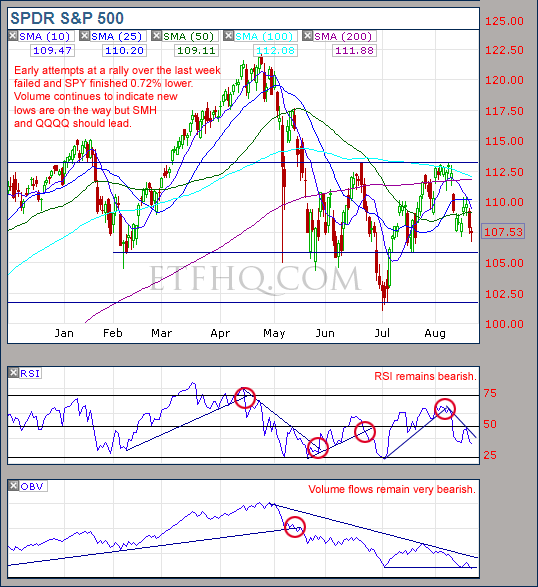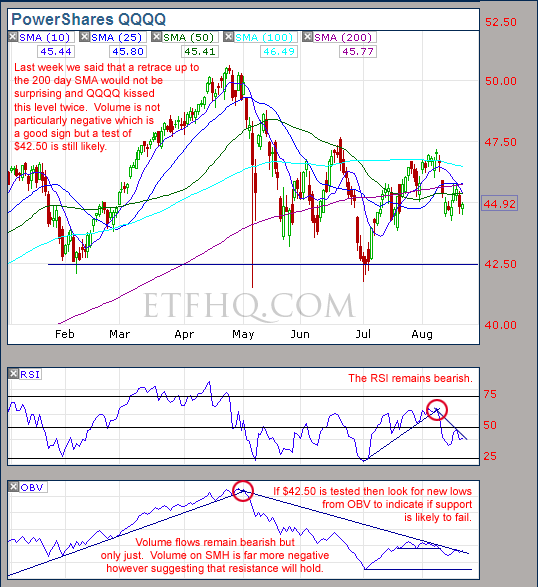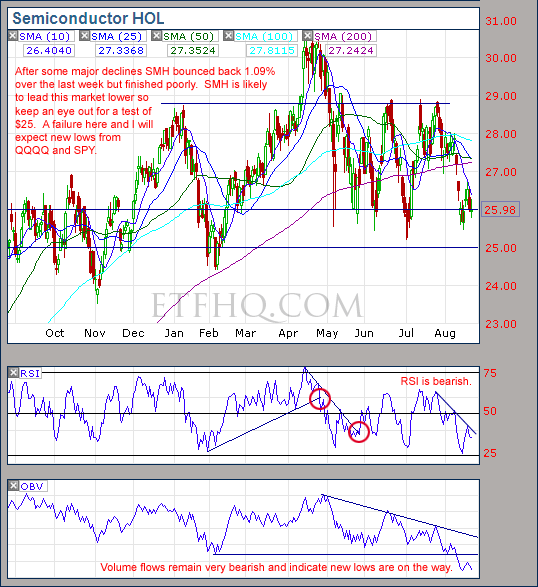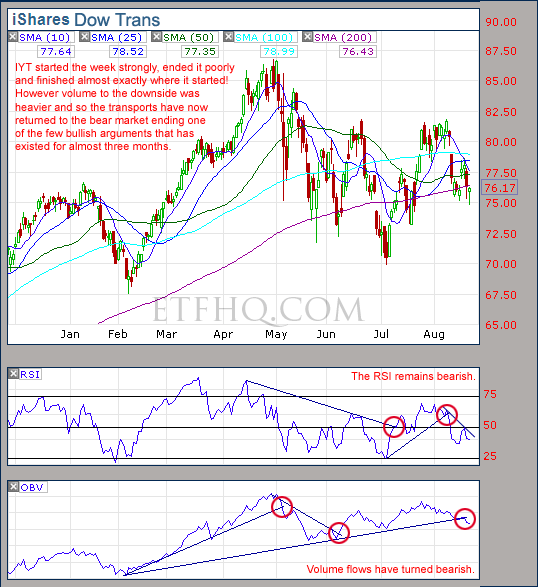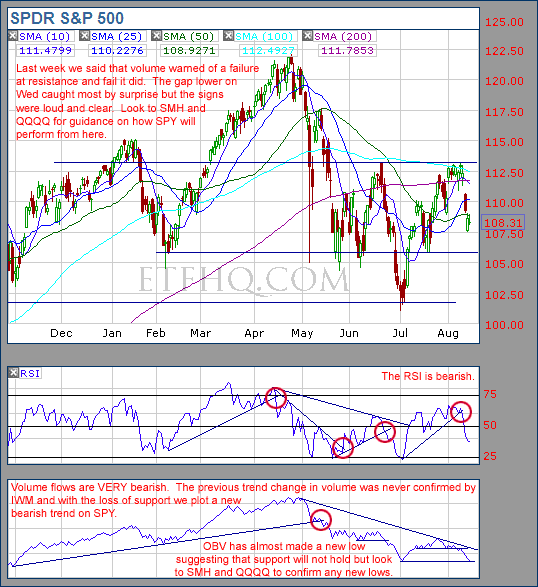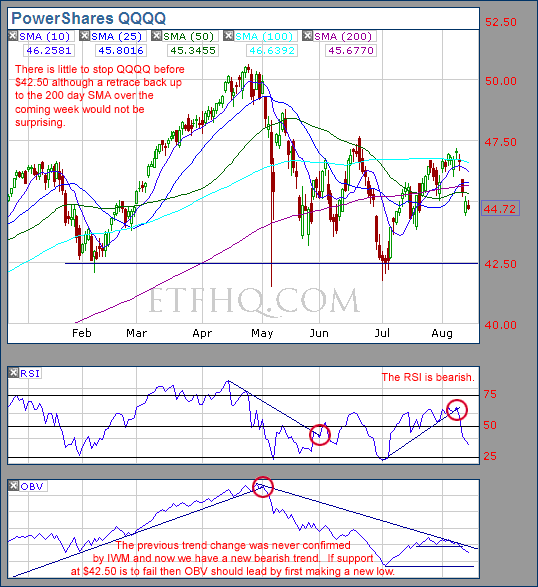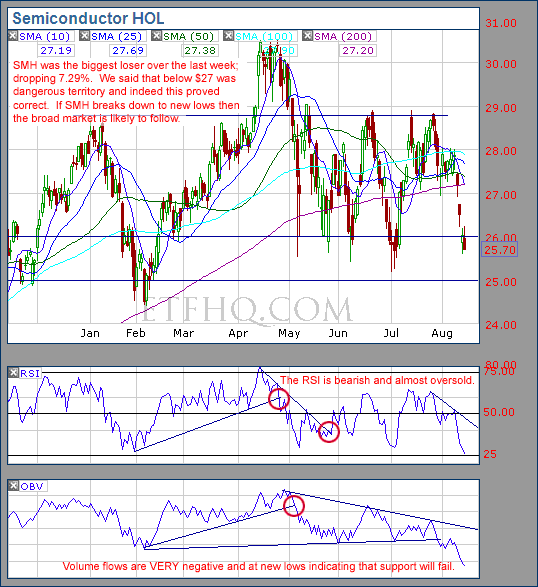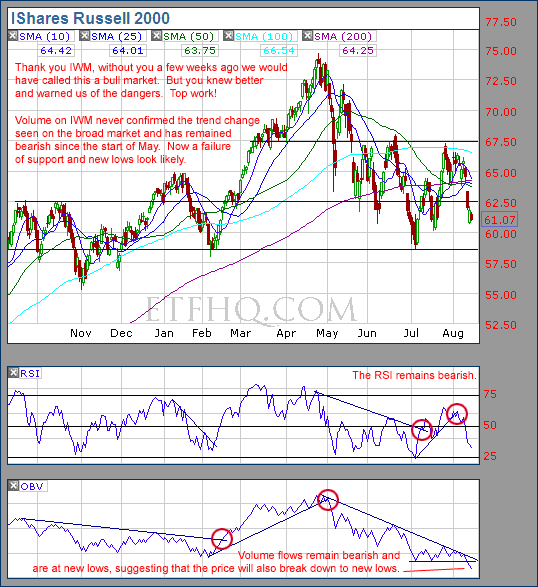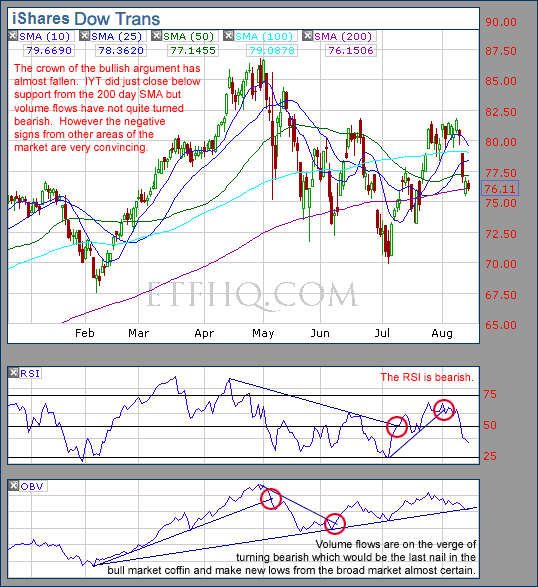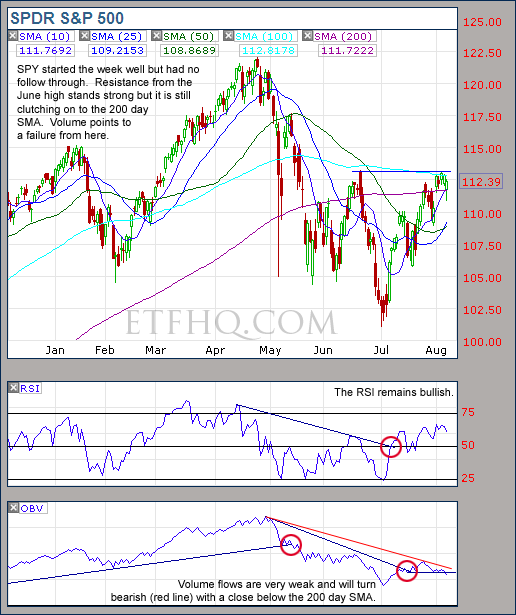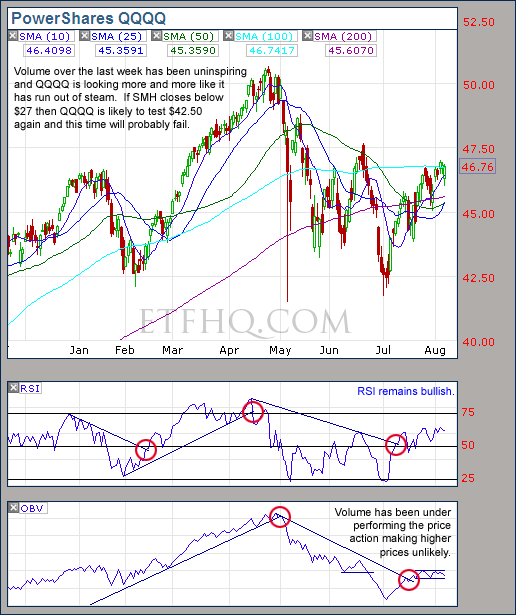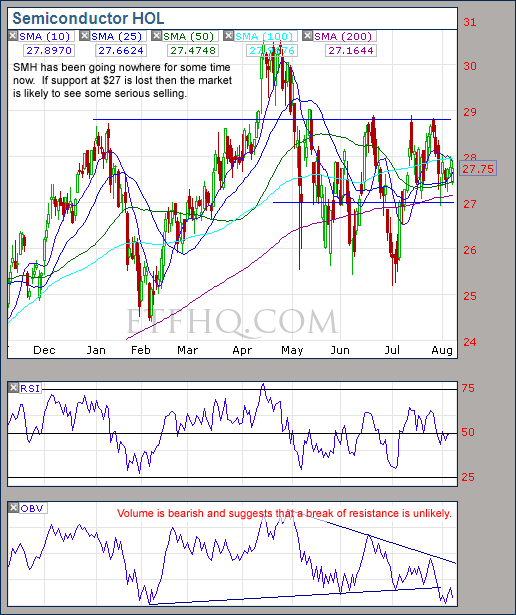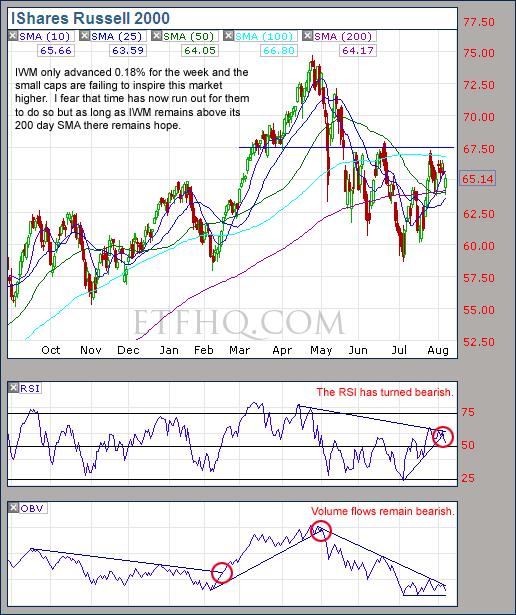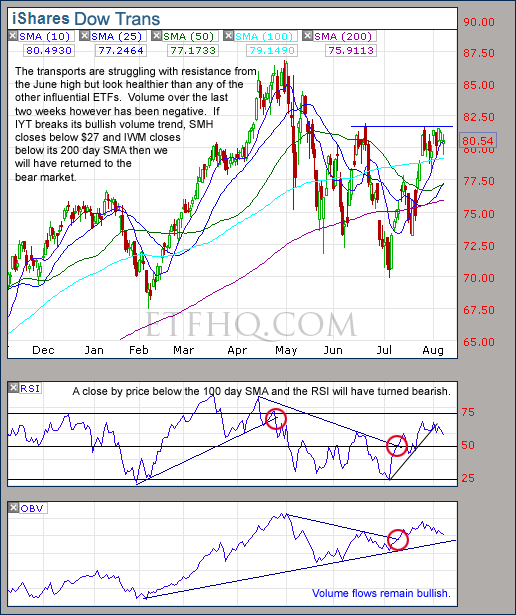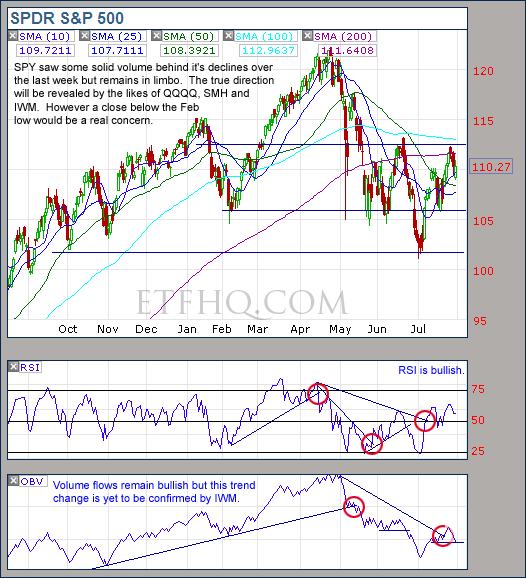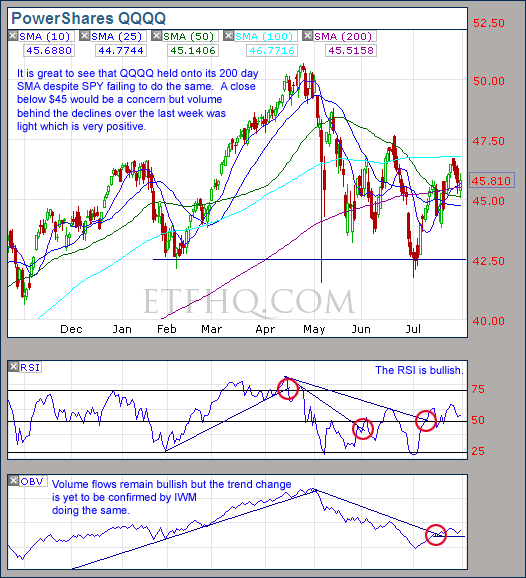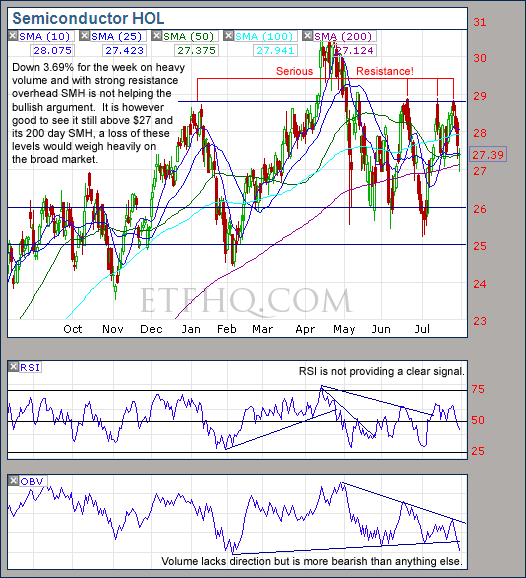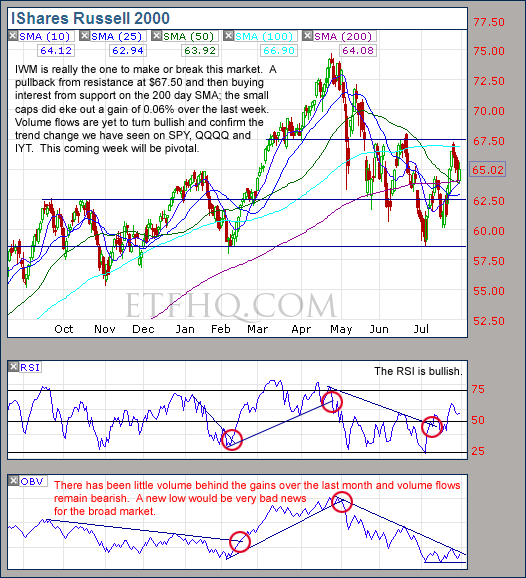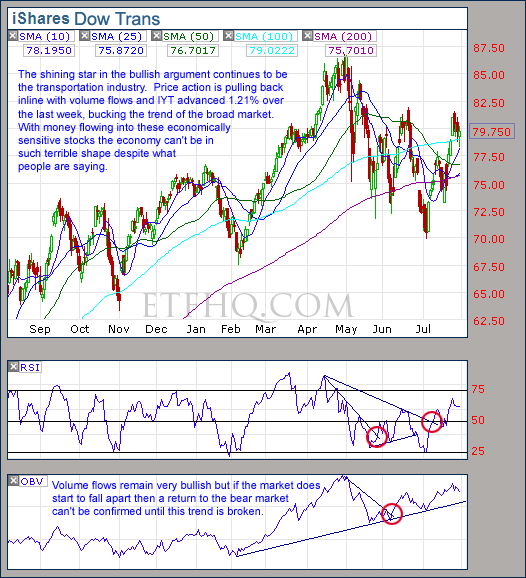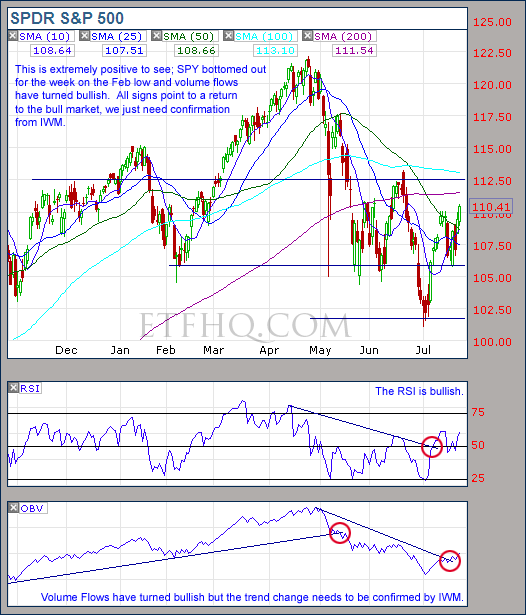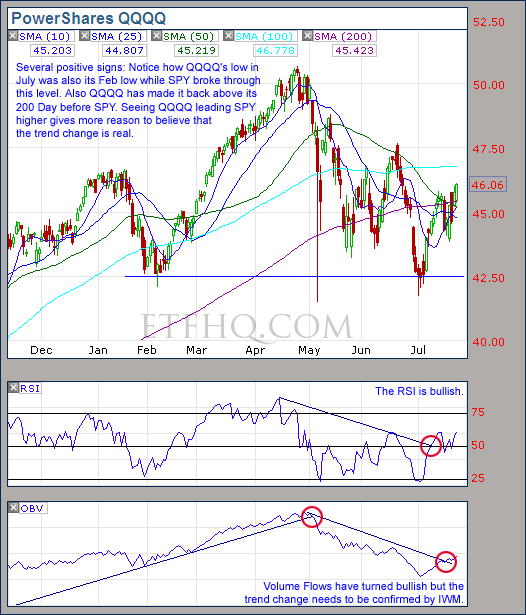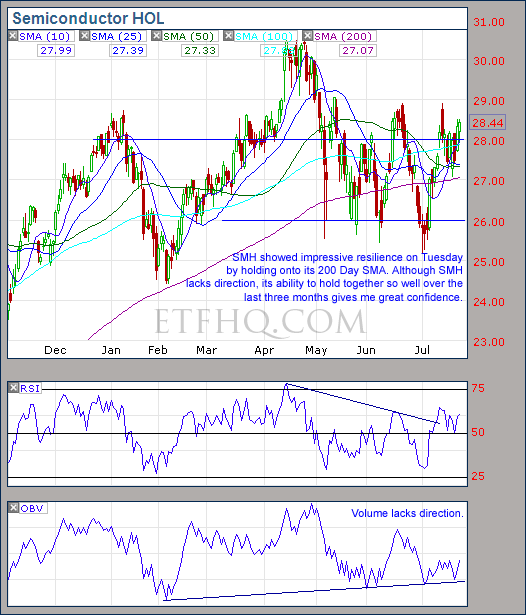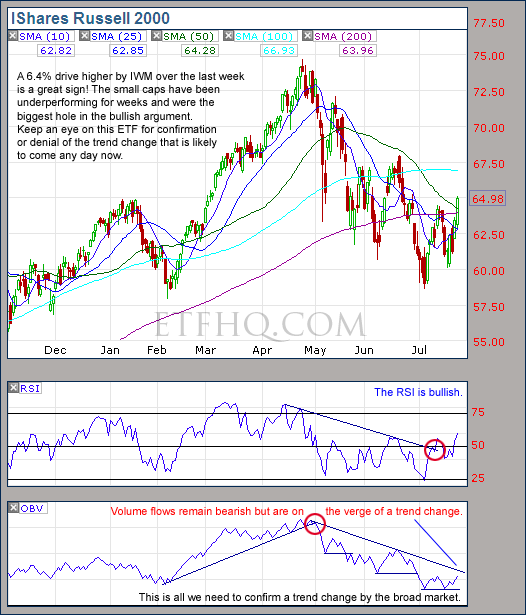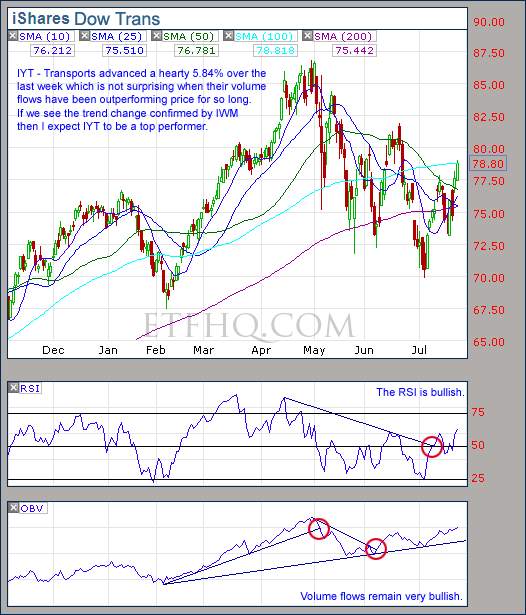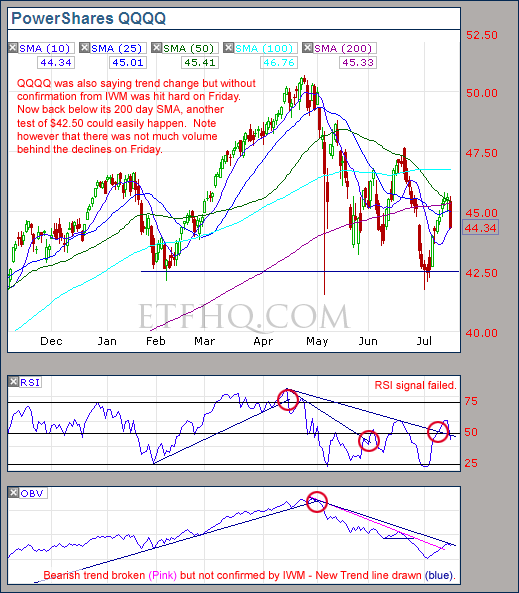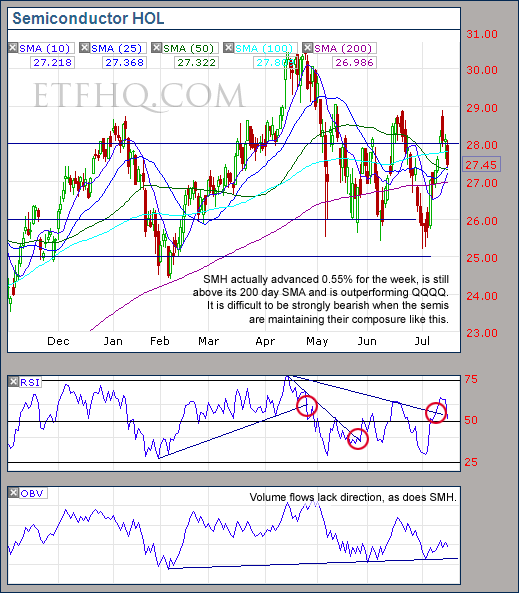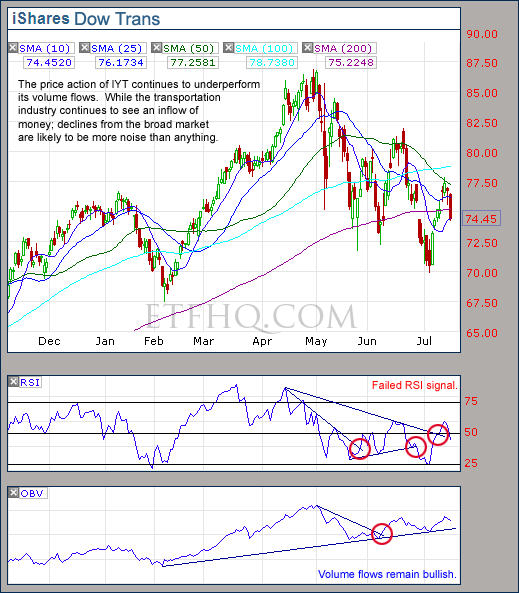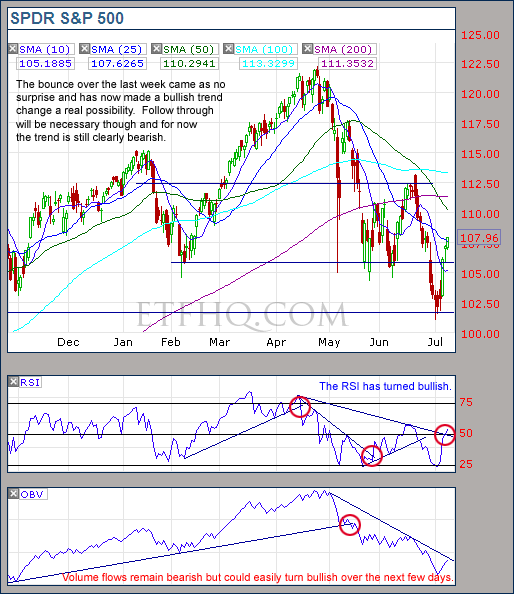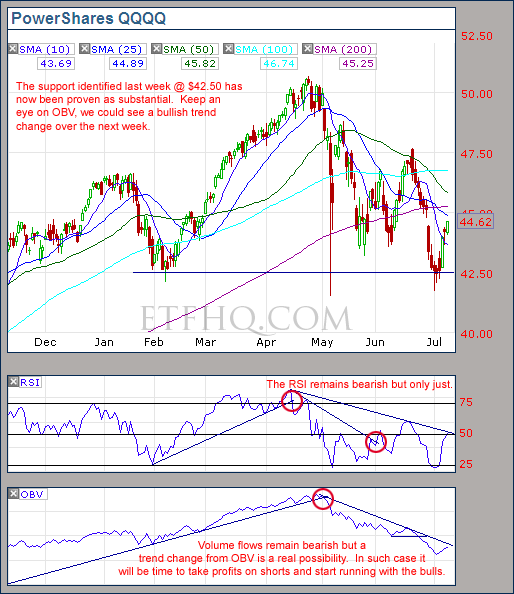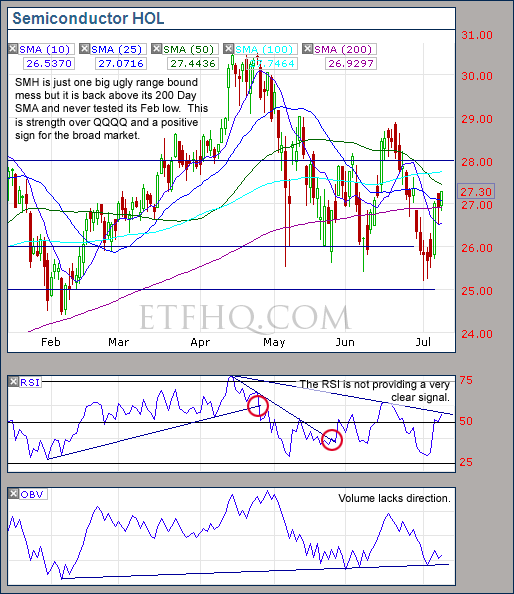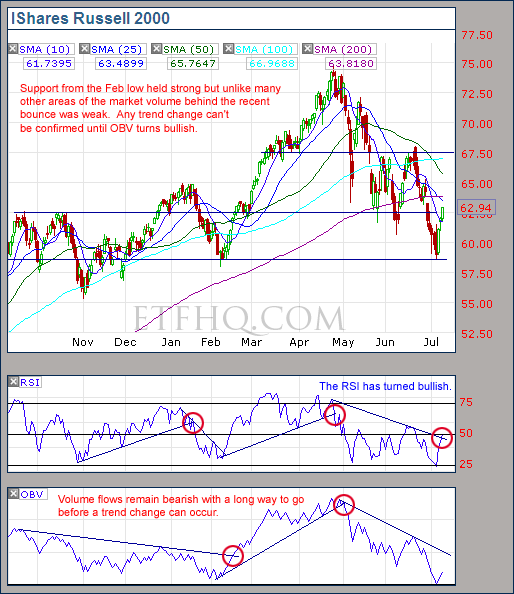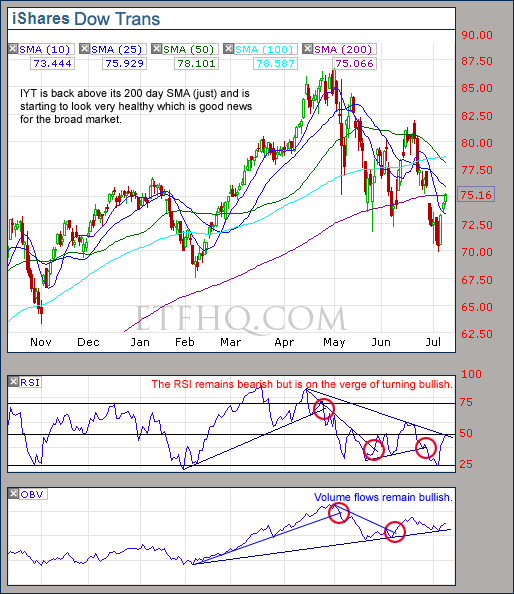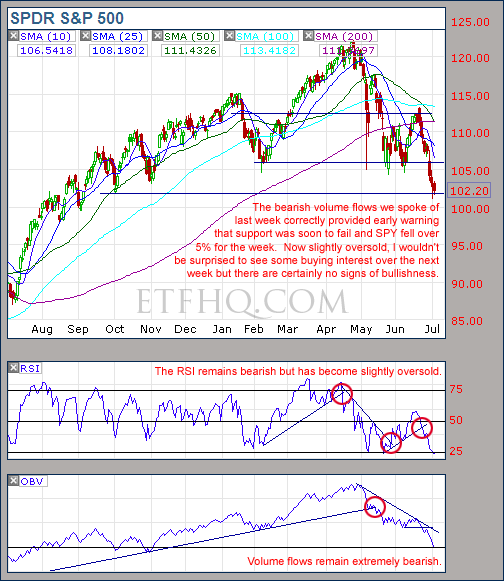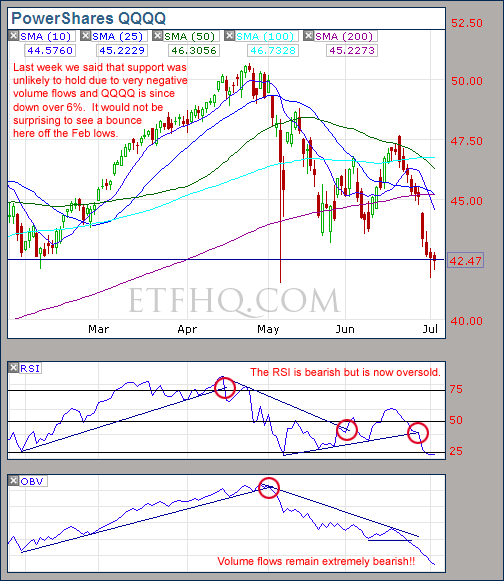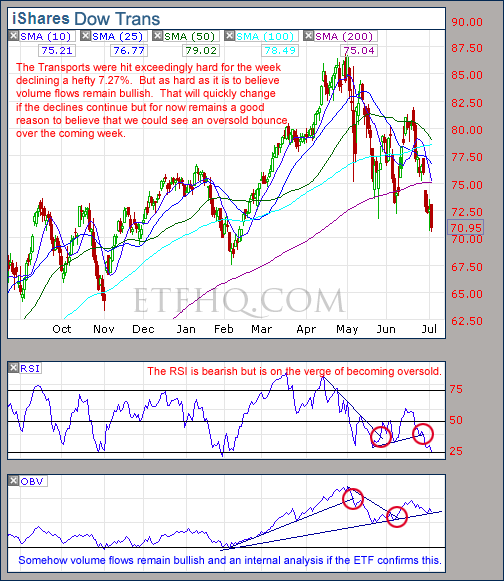August 30, 2010 – 05:35 am EDT
Despite the week getting off to a bad start the market finished strongly on Friday which is impressive as traders often like to take money off the table before the weekend. We are yet to see the new lows that we have been expecting and there are now several bullish signs over the short term.
****Thanks to all those who referred people to this newsletter over the last week. The more readers we have the more services we can provide you.
.
ETF % Change Comparison
.

If we were about to see a major market reversal off support then I would expect to see SMH and QQQQ being the first to see the buying pressure. Instead they lead the declines over the last week and SMH has been one of the worst performers over all the measured time frames.
Learn more – ETF % Change Comparison
.
![]()
.
A Look at the Charts
.
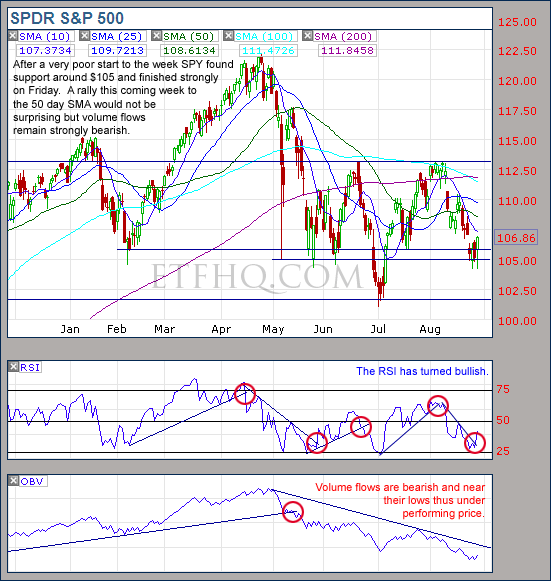
Volume remains heavily bearish but support has been found and signs of short term strength are evident.
.
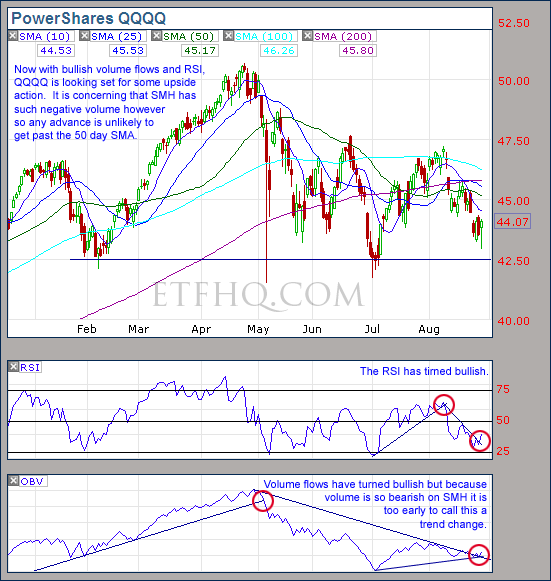
The comparatively strong volume on QQQQ is the strongest bullish sign in the market at the moment but SMH suggests otherwise.
.
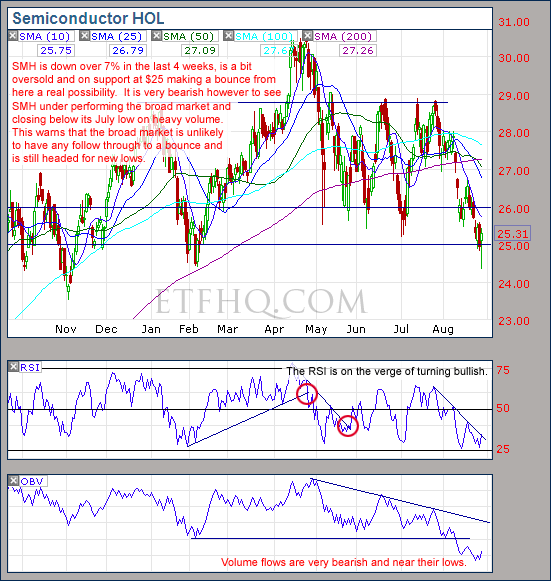
At bullish turning points SMH should outperform the broad market. Instead it has been suffering greater declines, more bearish volume and lower lows. This indicates that a bounce from here will not have the strength to get far.
.
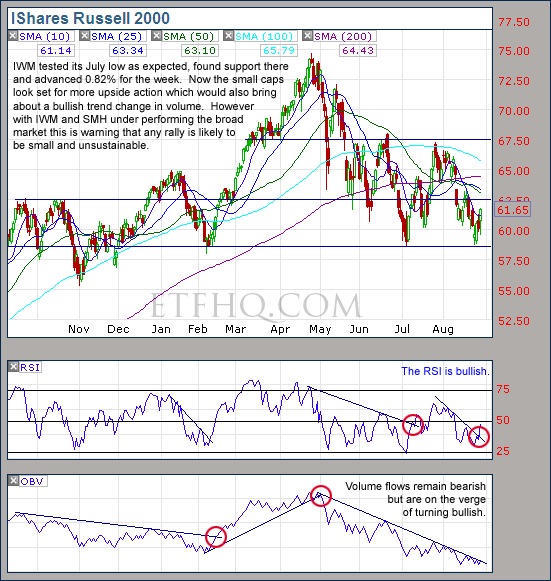
IWM looks good bouncing off support and advancing for the week while SPY declined but the broad market has not yet tested the July low. This is not the behavior of a strong market.
.
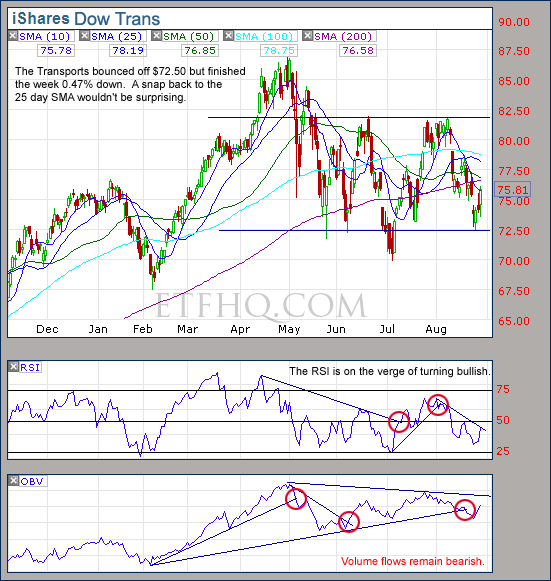
IYT finished the week particularly strongly and a retrace to the 25 day SMA is a real possibility.
.
![]()
.
OM3 Weekly Indicator
.

The OM3 indicator suggests a meekly bearish market.
Learn more – The OM3 Indicator
.
![]()
TransDow & NasDow
.

There continues to be no clearly dominant Index between the NASDAQ and the Dow while the Dow remains dominant over the Transports. Historically the market has been very unproductive in these conditions.
.
What the TransDow Readings tell us:
The TransDow measures dominance between the DJ Transportation Index (DJTI) and the Dow Jones Industrial Average (DJIA). In a strong market the more economically sensitive Transportation Index should be dominant over the DJIA.
Historically the DJTI has been dominant over the Dow 45% of the time. The annualized rate of return from the DJTI during this period was 18.47% with the biggest loss for one trade sitting at -13.27%. The annualized return from the DJIA during the periods it was dominant over the DJTI was just 4.06% and the biggest loss for one trade was -16.13%. A 4% stop-loss is applied to all trades adjusting positions only at the end of the week.
What the NasDow Readings tell us:
The NasDow measures dominance between the NASDAQ and the DJIA. Using the same theory behind the Trans Dow; in a strong market the more economically sensitive NASDAQ should be dominant over the DJIA.
Historically the NASDAQ has been dominant over the DJIA 44% of the time. Taking only the trades when the NASDAQ is above its 40 week moving average the annualized rate of return was 25.47% with the biggest loss for one trade sitting at –8.59%. The annualized rate on the DJIA during the periods it was dominant over the NASDAQ is just 8.88% and the biggest loss for one trade was –12.28%. A 8% stop-loss is applied to all trades adjusting positions only at the end of the week.
.
![]()
.
LTMF 80 & Liquid Q
.

Both LTMF 80 and Liquid Q remain in cash.
.
Historical Stats:
.

.
How The LTMF 80 Works
LTMF stands for Long Term Market Forecaster. It reads volume flows relative to price action and looks for out performance of volume measured on a percentage basis over the prior 12 months. During a sustained rally the readings will reach high levels (near 100%) making it imposable for the volume reading to always outperform price so any reading above 80% will maintain the buy signal. This system has outperformed the market over the last 10 years but performance has been damaged by some nasty losses. It only produces buy signals and only for QQQQ.
How Liquid Q Works
Liquid Q completely ignores price action and instead measures the relative flow of money between a selection of economically sensitive and comparatively stable ares of the market. It looks for times when the smart money is confident and and can be seen by through volume investing heavily is more risky areas due to an expectation of expansion. This system has outperformed the market over the last 10 years and remained in cash through most of the major declines. It only produces buy signals and only for QQQQ. We will provide more performance details on the web site for these systems soon.
.
![]()
.
Summary
With the market oversold and support underfoot the possibility of a rally from here is good but there are several subtle reasons the think that any rally will not last long, including:
- Strongly negative volume on SMH and OBV near lows.
- Under performance of SMH compared to the broad market and breach of July low.
- Under performance of IWM compared to broad market.
- Volume flows (OBV) making new lows on IWM.
- QQQQ under performing SPY.
- Volume flows (OBV) making new lows on SPY.
If volume flows on SPY and IYT turn bullish however then things will need to be reassessed. In such case I will probably have been wrong about a return to the bear market.
.
Any disputes, questions, queries, comments or theories are most welcome in the comments section below.
.
Cheers
Derry
And the Team @ ETF HQ
“Equipping you to win on Wall St so that you can reach your financial goals.”
.
P.S Like ETFHQ on Facebook – HERE
.
![]()
.
Quote of the Day:
[The majority of traders in the experiment lost money because] They lacked what I call emotional discipline-the ability to keep their emotions removed from trading decisions. Dieting provides an apt analogy for trading. Most people have the necessary knowledge to lose weight-that is, they know that in order to lose weight you have to exercise and cut your intake of fats. However, despite this widespread knowledge, the vast majority of people who attempt to lose weight are unsuccessful. Why? Because they lack the emotional discipline. – Victor Sperandeo

